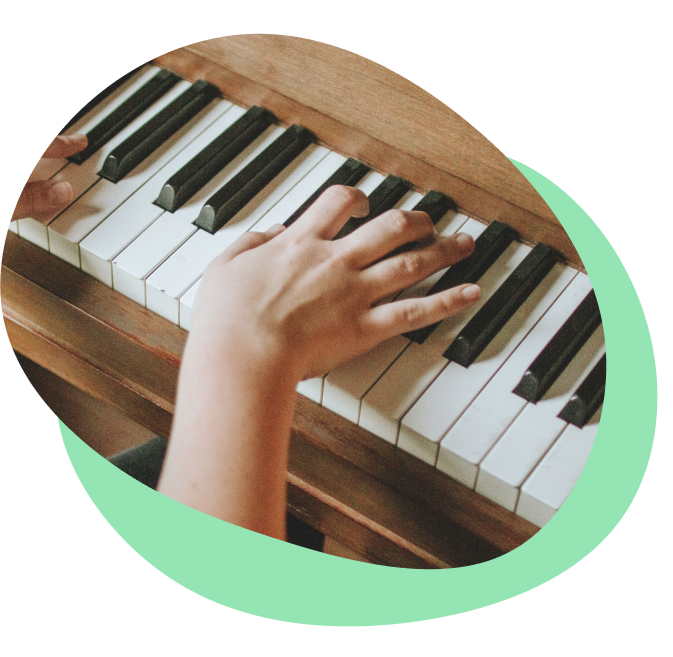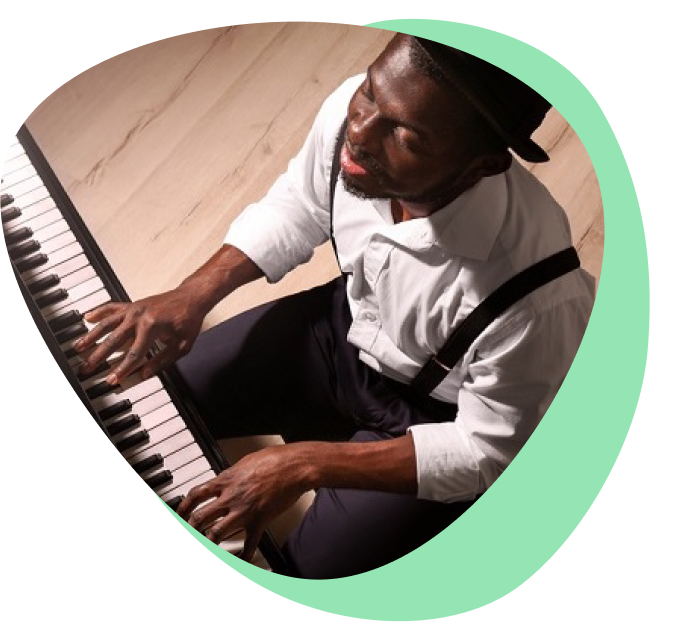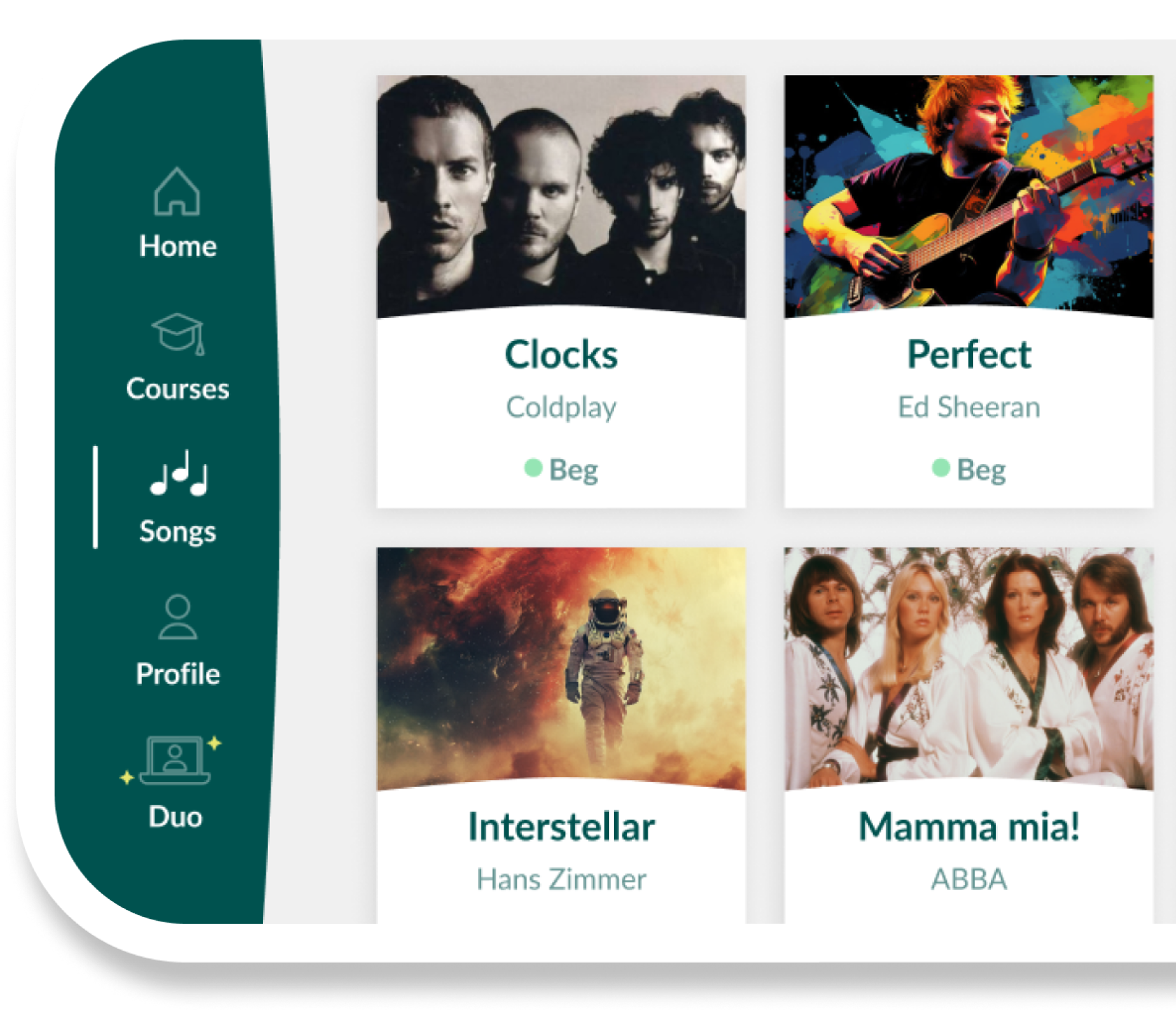What are ties in music? Ties in music are symbols that connect two notes of the same pitch together, creating one rhythmic value. Ties can be useful when breaking down more complex rhythms into more understandable groupings or writing note durations through barlines. Ties are an important concept to understand for any musician as they are a vital component of notated rhythm. In this article you will discover how to read, play and use ties in music and how they differ from slurs. Let’s get started.
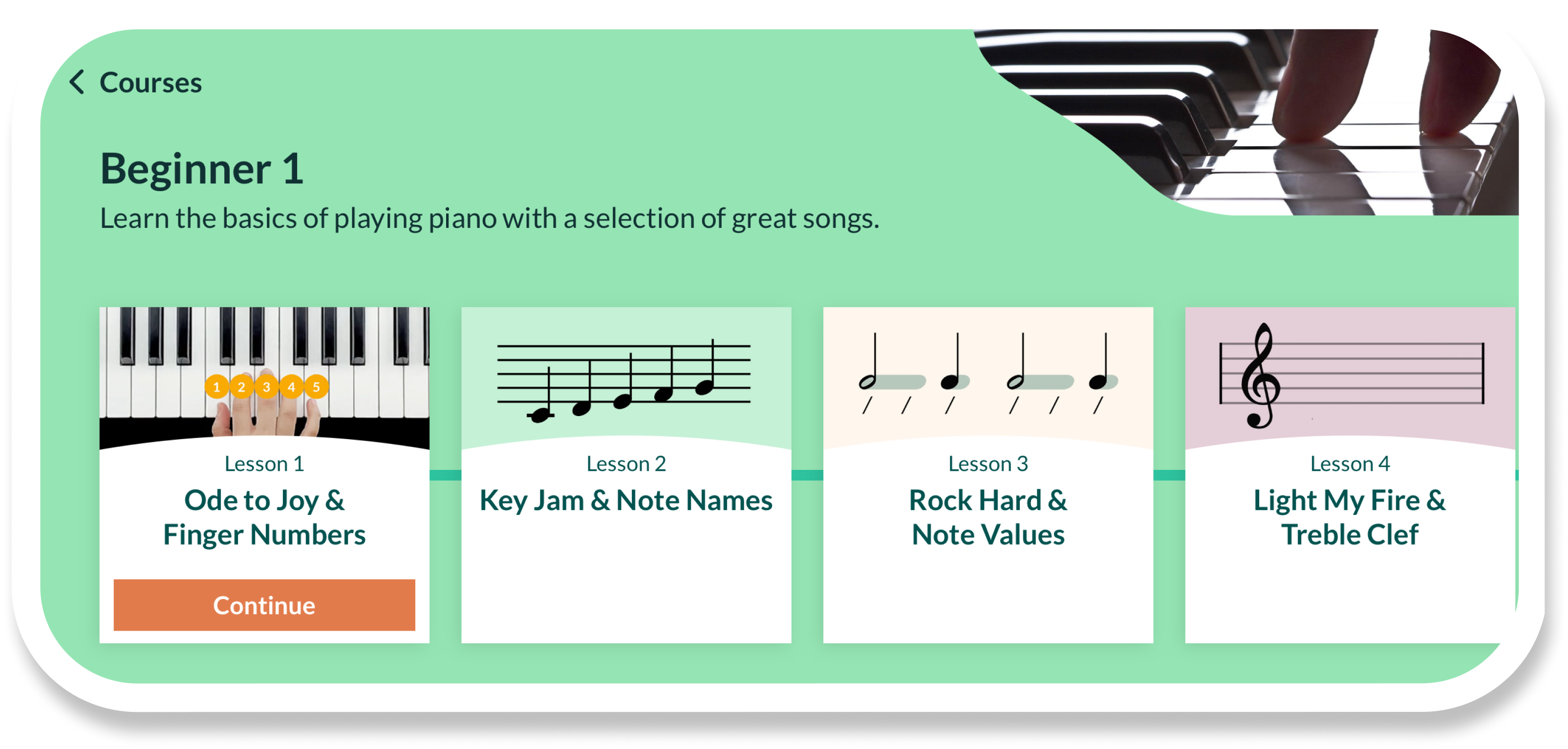
What is a tie in music?
A tie in music is a way of increasing the length of a rhythmic value by combining two notes when writing a single note value conflicts with rhythmic grouping or isn’t possible due to bar lines. A tie is notated with a curved line linking two notes of the same pitch.
A tie music symbol is very similar to the slur symbol in music. Ties and slurs in music differ as slurs connect notes of different pitches.
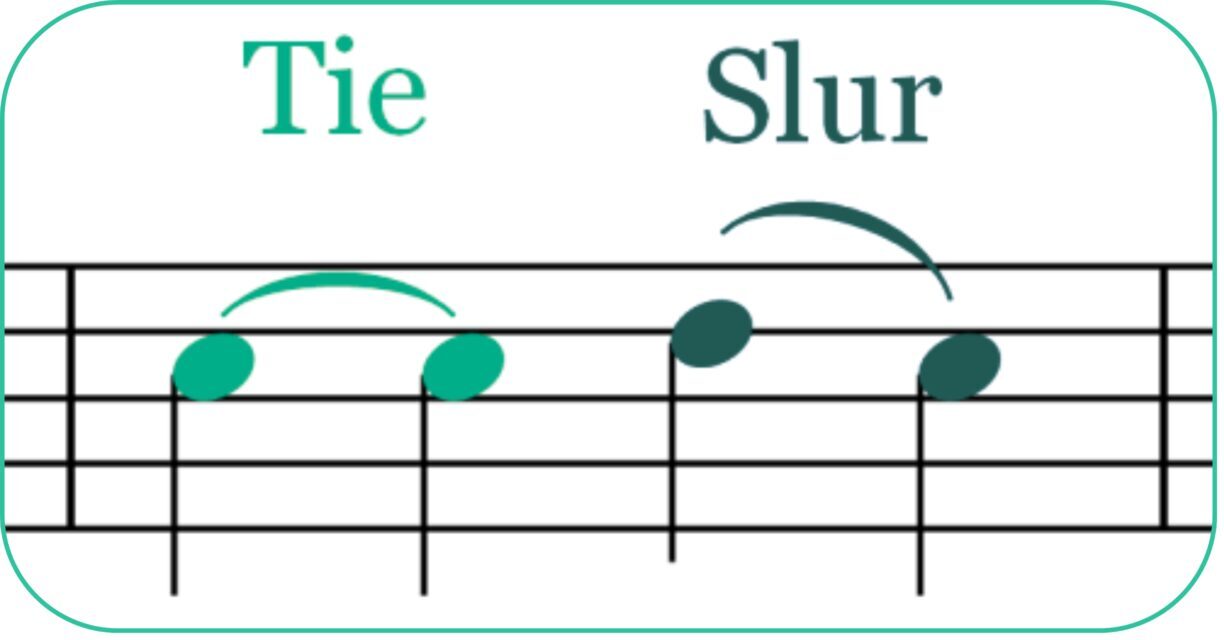
In this first example, we see how a tie between two quarter notes works. A quarter note is worth one beat. However, when a tie links two quarter notes across the bar line, it is worth two beats (beat four + beat one).

Ties were used in this situation as a half note (minim) would not have been able to fit in the bar or cross the bar line so a tie was used to achieve the desired rhythm.
How to play and recognize tied notes?
Let’s look at some more examples of tied notes and how to recognise them.
In the following example of two tied notes, the tie links the quarter note (crotchet) on beat four to the whole note (semibreve) in the next bar, creating a note that lasts for the duration of the fourth beat (one beat) and the next bar (four beats).

In the following example, the first note is a whole note tied across the bar line into the second measure to another whole note. This makes the note worth two bars total (beat four + four beats).

Take a look at this example of how to count tied notes and how they relate to the beats of the bar.

In this next example we see an eighth note (quaver) tied to a quarter note. The dotted notes C and E in this bar both have the same value. So why use a tie for the E? The answer is proper rhythmic grouping. In a bar of four four the strong third beat needs to be visible when more intricate notation is used. If the E was a dotted quarter note it would cover the third beat, making the rhythm more difficult to read.

What is a slur in music?
As we have briefly discussed, a slur instructs you to play two or more notes smoothly. This articulation gives you a smoother phrase as you move from one note to the next without a break in the sound. The Italian term for this is “legato”.

Notice that the line connects two notes of different frequencies while music ties connect two notes of the same pitch. Like ties slurs can extend across multiple different notes or bars.

This is the beginning of Beethoven’s “Fur Elise”, one of the most popular piano songs of all time. In order to make it sound smooth and expressive, we use a slur to instruct the player to use legato technique and connect notes on a piano.
Tie vs Slur
To learn to play ties and slurs it is very important to understand the difference between the two. This handy table should help you get to grips with it.
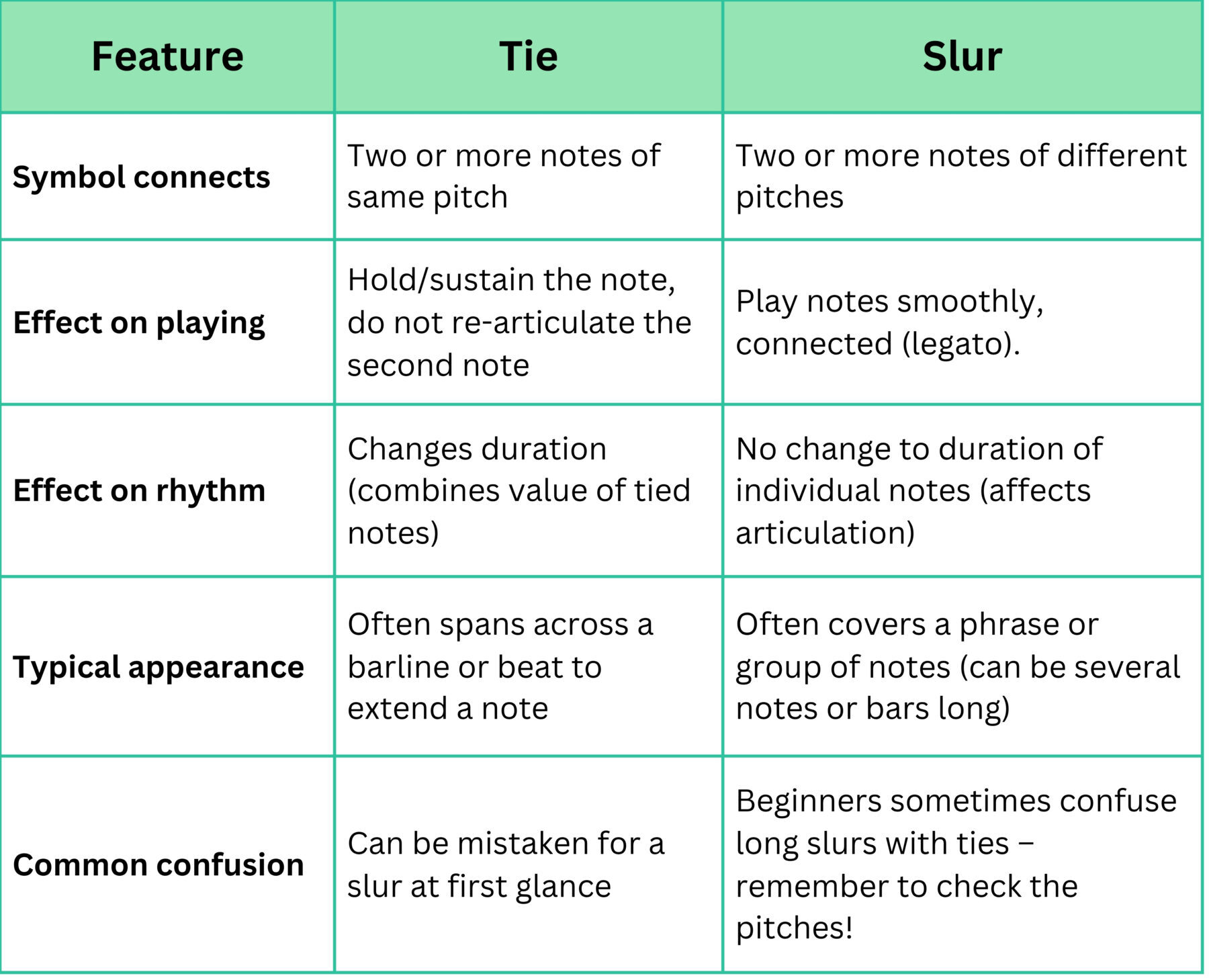
Now you understand the differences between a slur vs tie you will be able to more confidently read sheet music.
Practice playing ties and slurs
A good starting point for learning to identify ties and slurs correctly is with Skoove. Let’s start with Bill Withers “Lean On Me”.
When learning this song, be sure to internalize the duration of tied notes. While practicing the song, make sure to hold the tied notes to their full value. At the same time pay attention to the slurs between different pitches. You can try adding in some basic piano chords with the melody.
Now you understand how ties in music work, how to play a tie on piano and the difference between a tie and a slur. You are one step further on your journey of musical understanding. Be sure to keep practicing and use Skoove for expert guidance and help. Happy practicing!
Author of this blog post:

Georgina St George has been playing piano most of her life. She has a thriving piano school on the south coast of England. She loves to infuse her students with her passion for music, composing and performing. Her music has been featured on over 100 TV shows and her musicals have been performed in New York and London’s West End.
Published by Lydia Ogn from the Skoove team




